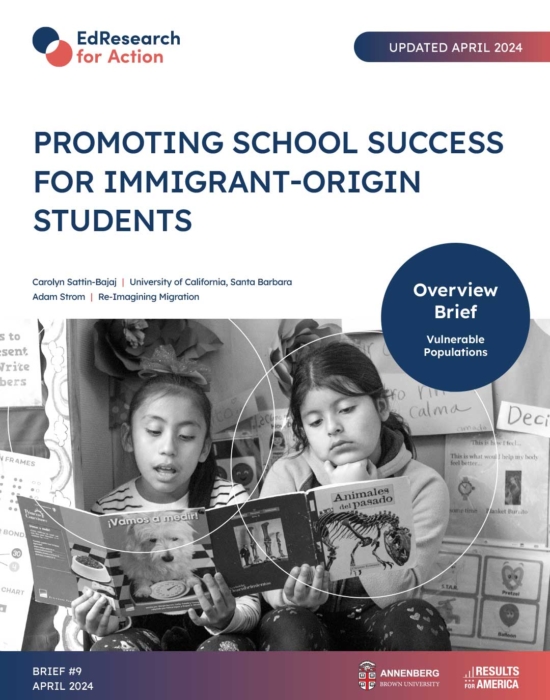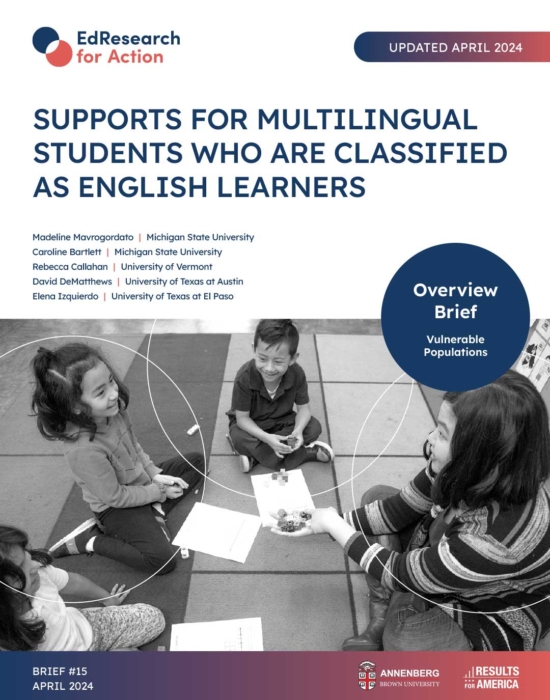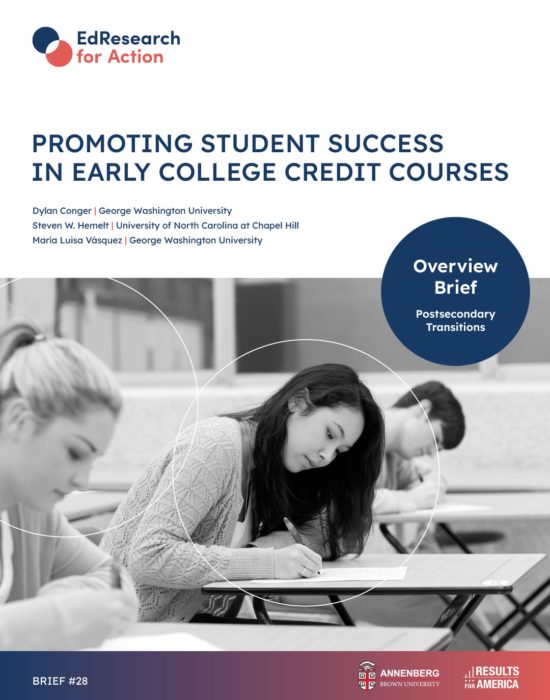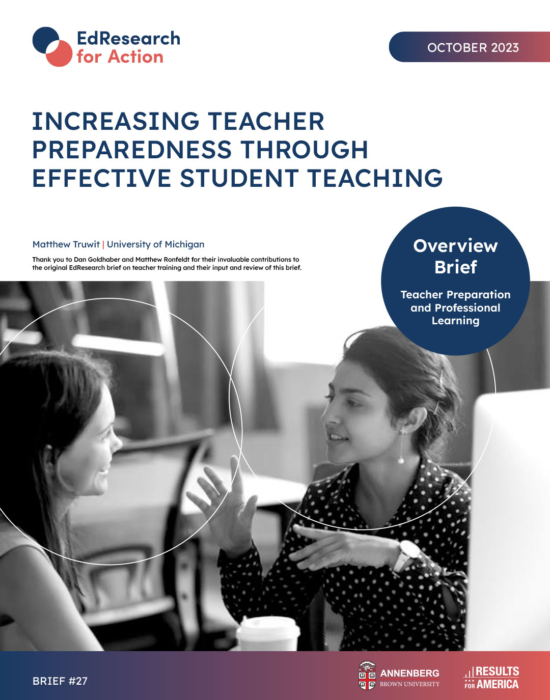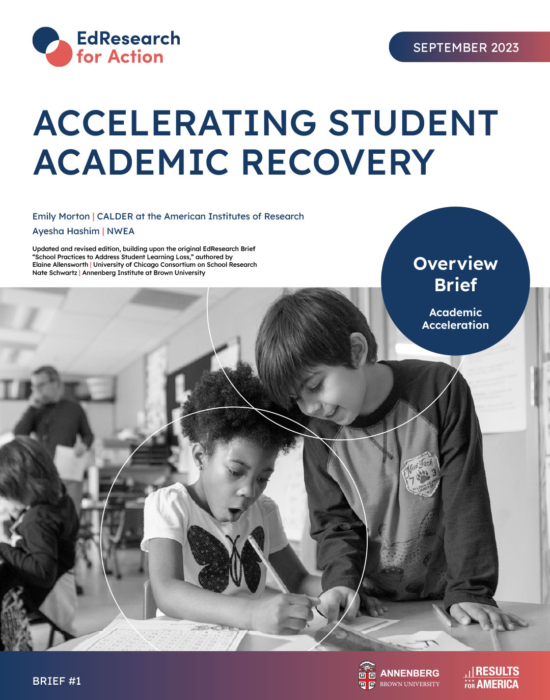LEVERAGING COMMUNITY PARTNERSHIPS FOR INTEGRATED STUDENT SUPPORT
This brief is one in a series aimed at providing K-12 education decision makers and advocates with an evidence base to ground discussions about how to best serve students during and following the novel coronavirus pandemic.
Velma McBride Murry | Vanderbilt University
Reuben Jacobson | American University
Betheny Gross | Center on Reinventing Public Education
February 2021 | Brief No. 14
Central Question
What does research tell us about how to use community-based resources to address academic and social gaps resulting from the COVID-19 pandemic?
Key Insights
Breaking Down the Issue
- The pandemic revealed and exacerbated problems that have pushed schools and districts beyond their existing capacity to effectively respond.
- Partnerships between school districts and community organizations let schools draw on rooted community assets to confront key areas of concern, including basic family needs, technology access, childcare, and academic enrichment.
Strategies to Consider
- Evidence supports the use of comprehensive school-site partnerships, such as full-service community schools, to leverage existing resources and provide a structure for families and community members to strengthen the school.
- Integrated or wraparound services, where schools partner with community organizations to provide students with direct non- academic supports, also show meaningful evidence of success. Extended learning time programs provided by community partner groups can be adapted in innovative ways to support students during the pandemic.
- Community-based assets are able to coordinate their school-level efforts most effectively when supported by systems-level coordinating infrastructure.
Strategies to Avoid
- Community-based organizations will likely not be able to assist school districts in addressing additional needs during this period without additional resources.
- Establishing partnerships on unspoken expectations, or without having full knowledge of the skills, capacities, and resources of new partners can lead to misalignment on expectations and desired outcomes.
- Systems that move forward to address new demands without assessing existing resources can fail to uncover assets that are already available in the broader community.
Breaking Down the Issue
The pandemic revealed and exacerbated longstanding problems that have pushed the majority of schools and districts beyond their existing capacity to effectively respond.
While schools have traditionally played some role as a social service provider, the pandemic produced a wave of operational needs on top of intense new instructional demands.
- For many schools, the operational demands (device distribution, provision of home internet access, meal distribution, family communication) crowded out capacity for high-quality instruction.
- New demands are not likely to let up in the near future; regardless of mode of instruction, school districts are supporting students with growing academic, mental health, and basic fundamental needs (e.g., food and nutrition).
The demands of schooling during the pandemic exacerbated existing systemic barriers to learning including poverty, inequitable distribution of resources, and racial, ethnic, economic, and ability bias.
- The challenge of navigating the pandemic has been more acutely felt in schools and districts situated in communities with high poverty rates and those serving majority students of color.
Partnerships between school districts and community organizations let schools draw on rooted community assets to confront key areas of concern, including basic family needs, technology access, childcare, and academic content delivery and enrichment.
Basic family needs: At the start of the pandemic, the nation suddenly realized that schools, as the place most children go every day, have been serving the basic needs of some families including food, access to social workers and family support, and in some cases health care. The needs have only grown more urgent as the pandemic continued, particularly the need to support social and mental health.
- Districts stepped up to provide meals at an unprecedented scale. Others coordinated with local aid agencies and funders to provide financial assistance and other support to families.
- Community school efforts show that partnering with community organizations to meet these needs could be a way to both improve the quality of support to families and the range of support that families can access through schools.
Technology access: Districts across the country have worked to distribute computers and tablets to students but have had a harder time ensuring household internet access.
- More than half of districts reported distributing devices to all or some of the district’s students, but only about 30 percent of districts reported offering students hotspots for home access or community-based hotspots.
- Helping thousands of families to sign up for home internet access can be an enormous administrative burden and require a level of support and shepherding that is better suited to local community partners. Local community partnership is especially important because it frees districts up to focus on core functions like academic and mental health supports for students.
Childcare: With schools closed, many families lost an important source of childcare as restrictions on child care enrollment forced many providers to close.
- Many families, particularly those employed in low-wage or “essential” sectors, were not able to shelter in place or had to return to work as soon as possible.
- Community-based organizations stepped in to fill the void left by school-based childcare closures. In Nashville, for example, churches organized their congregants and members to provide essential worker families with childcare, assistance with challenges associated with remote learning, and baskets of food.
Learning and enrichment: Last spring, many out-of-school providers pivoted quickly to offer virtual programming to students and became a vital source for parents seeking to supplement the remote learning activities that schools provided.
- Out-of-school programming has long been a source for students’ enrichment and learning. Because many of these providers are embedded within communities, they have a keen understanding of what the community needs and have built up trust within the community.
- As we move through the 2020-21 school year in a largely hybrid or virtual way, out-of-school providers along with other community partners continue to offer virtual programming but have also become safe physical locations that can host small groups of students for in-person experiences or assistance with their remote learning programs.
Strategies to Consider
Evidence supports the use of comprehensive school-site partnerships, such as full-service community schools, to leverage existing resources and provide a structure for families and community members to strengthen the school.
Several strong models of school-community partnership provide a theoretical framework and research base to make the case for the impact of community-based assets that support the whole child.
- The ASCD Whole Child Network; CDC Whole School, Whole Community, and Whole Child Model; and Comer School Development Programs center students in an ecological system of school-family-community partnerships that provide the necessary supports and services for students to thrive.
Research that looks across communities and schools, provides strong evidence that integrated partnerships, including community schools, have been shown to improve academic outcomes, attendance and on-time grade progression, and other developmental outcomes for students of all ages. Even amid the pandemic, schools and systems have opportunities to form and leverage community partnerships.
- Schools and school systems can leverage and repurpose existing funding and relationships to support partnerships that meet the needs of children and families during and after the pandemic. Roaring Fork School District in rural Colorado, for example, shifted its existing parent resource team from providing school-based support into a central team that conducts ongoing outreach to families to identify needs and coordinating support to families with a host of community partners.
- School systems can expand their own capacity in new, critical needs by reaching out to community organizations that have a history providing services. For example, Aurora Public Schools in Colorado, Cleveland Metropolitan School District, Pittsburgh Public Schools, and New York City Department of Education partner with community organizations with a history of serving children and families to host learning hubs for students in remote learning. Hillsborough School District in Florida is partnering with organizations in the local Hispanic community to coordinate communication with families in the community.
- Schools and partners can also seek out new funding sources using a variety of guides and by reviewing new funding opportunities such as the US Department of Education Full-Service Community Schools Grant Program, Promise Neighborhood Program, and other state and local funding sources.
Guides to start and strengthen school-community partnerships can help schools and districts build partnerships that are responsive to local needs and that include family and community members in authentic ways.
- A number of community schools guides are available, as well as a set of standards that represent the best thinking from practitioners in the field.
- Schools and districts can begin developing these intentional partnership strategies during COVID-19 by assessing current partners, and by identifying new and aligned community-based resources. The Community Schools Playbook provides an implementation guide for implementing this evidence-based strategy.
- The Dual-Capacity Framework for Family-School Partnerships is built on research and best practice to help schools tailor their family engagement processes to their local contexts.
Integrated or wraparound services, where schools partner with community organizations to provide students with direct non-academic supports, also show meaningful evidence of success.
Sometimes referred to as integrated student services, wraparound supports provide direct service through partner organizations either at the school site or through a referral process.
- Integrated student services (ISS) provide a wide variety of services, including physical health, mental health, social services, trauma-informed care, and academic support.
- Broadly, the ISS model includes five essential elements to support service delivery: community partnerships, student support coordination, integration into the school setting, needs assessments, and data tracking.
Many of the models with the strongest evidence base use site-based coordinators to build out services for individual students.
- Models such as Communities in Schools use a site-based coordinator to coordinate services for individual students, as well as the whole school.
- City Connects, also using a site-based coordinator, creates an individualized support plan for each student. City Connects has demonstrated improved academic and behavioral outcomes across a variety of measures.
Extended learning time programs provided by community partner groups can be adapted in innovative ways to support students during the pandemic.
A wide variety of afterschool program evaluations across the country demonstrate positive academic and behavioral outcomes for students such as improved attendance and engagement, reduced truancy, and improved behavior during the school day.
- Partners can increase learning opportunities for students.
- The Afterschool Alliance offers resources for schools and partners on how to operate afterschool and other out-of-school-time programs during COVID.
Community partners can work with schools to create “community learning hubs” that support the various opening plans for school districts.
- Specific examples of how communities have created hubs during the pandemic include a partnership between the United Way, a local community foundation, and the Cleveland (OH) Metropolitan School District. Schools can also leverage existing partnerships strategies, like community schools, to support expanded learning opportunities.
Community-based partnerships are able to coordinate their school-level efforts most effectively when supported by systems-level coordinating infrastructure.
A cross-sector systemic approach ensures that system leaders engage in mobilizing the resources of their organizations and align resources to meet the needs of communities and schools by leveraging existing data and state and federal funding.
- StriveTogether is an equity-focused “collective impact” approach that brings systems together to coordinate interventions in order to achieve clearly defined outcomes. The Collective Impact Forum is an online resource and network for those currently engaged in, or who want to start, a coordinated systemic approach to leveraging community-based assets. Stories from Fresno, California, and Adams County, Colorado, describe how StriveTogether network partners refocused their collective impact approach to meet the needs of students, families, and communities during the pandemic.
- This community schools guide, based on feedback from practitioners, helps create a systemic community schools initiative that coordinates resources across multiple sites.
Other promising models for coordinating across individual partners include Children’s Cabinets and Promise Neighborhoods, which bring together school officials, government agencies, and community stakeholders for decision-making across a neighborhood, city, or county.
- By bringing systems-level leaders together, Children’s Cabinets attempt to identify the salient problems and leverage resources to effectively address them. Harvard’s Education Redesign Lab studies Children’s Cabinet approaches, provides support to the field, and has a number of resources for local leaders that specifically address COVID-19 and systemic racism. The Forum for Youth Investment also has a number of ongoing projects and offers technical assistance in this area.
- Focusing on a specific geographic area, Promise Neighborhoods unite community partners around a common set of results.
Community Health Assessments (CHA) are designed to identify key health needs and issues through systematic data collection, including multisector collaborators and stakeholders to address various community challenges.
- The wide array of data collected through CHA is a valuable resource that educational leaders in collaboration with community partners can use to set priorities and develop action plans to address the needs of families and communities. The CHA also includes community-level resources that can guide communities on ways to effectively distribute funds across systems and community partners (e.g., faith-based institutions, nonprofits).
- Vanderbilt University Medical Center’s VUMC CHNA+Implementation Strategies is an example of a CHA that also includes specific implementation strategies and action plans of effective ways to address community needs.
- Organized partnership advocates can press policymakers to provide access to funds for community-based organizations that provide resources and programs for students and families that help close academic and social gaps.
Strategies to Avoid
Community-based organizations (CBOs) will likely not be able to assist school districts to address the added demands associated with the pandemic without receiving additional resources.
CBOs that have historically provided services to students and families, such as afterschool programs, are at risk of disappearing, due to loss of staff and gaps in their funding sources.
- Results from a national online survey conducted by Afterschool Alliance, revealed that 84% of after school programs were on the brink of closing.
Establishing partnerships on unspoken expectations, or without having full knowledge of the organization’s track record, skills, capacities, and resources of new partners, can lead to misalignment on expectations and desired outcomes.
Bringing new partners into the organization requires time to establish and build relationships to ensure successful collaborations and can impose burden on CBOs.
- CBOs vary in structure, resources, expertise, and relationships with schools, families, and marginalized communities. Recognizing the urgency of addressing the needs of students, families, and communities, some CBOs may expand their network to include new partners without considering if the new partnerships have the capacity or desire to meet the needs of families, schools, and communities.
- Some partnerships may be more focused on their own goals rather than results as defined by families, schools, and targeted communities.
Systems that move forward to address new demands without assessing existing resources can fail to uncover assets that are already available in the broader community.
Conducting a community health needs assessment can be beneficial in many ways, including ensuring that services are not duplicated and providing opportunities to coordinate services across and within partners.
- Not knowing what is available can result in missing out on potential partnerships and access to existing resources and strategies that have been implemented with success

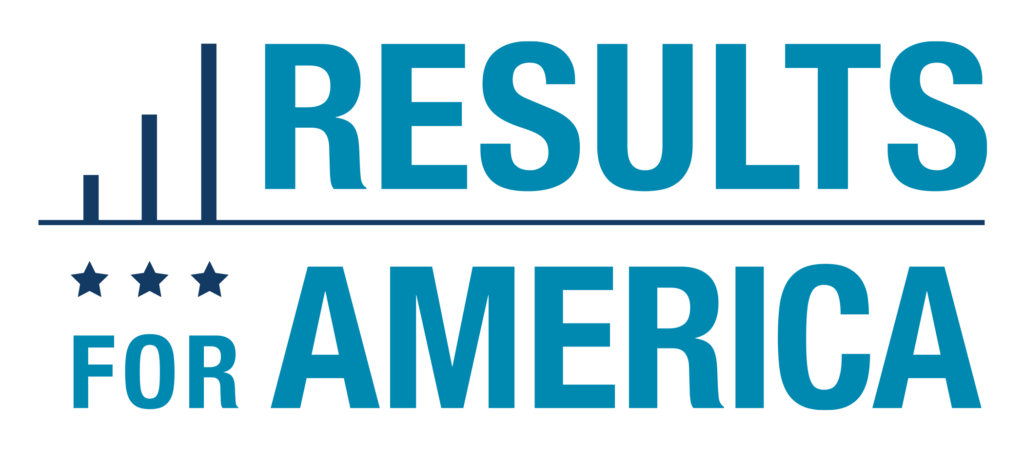
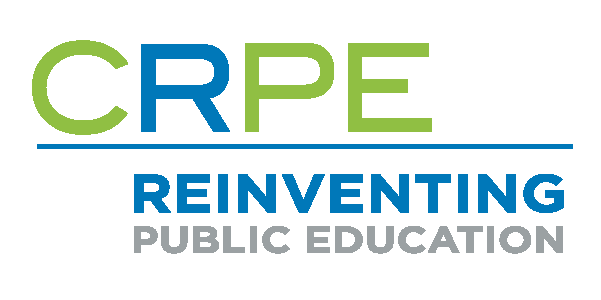
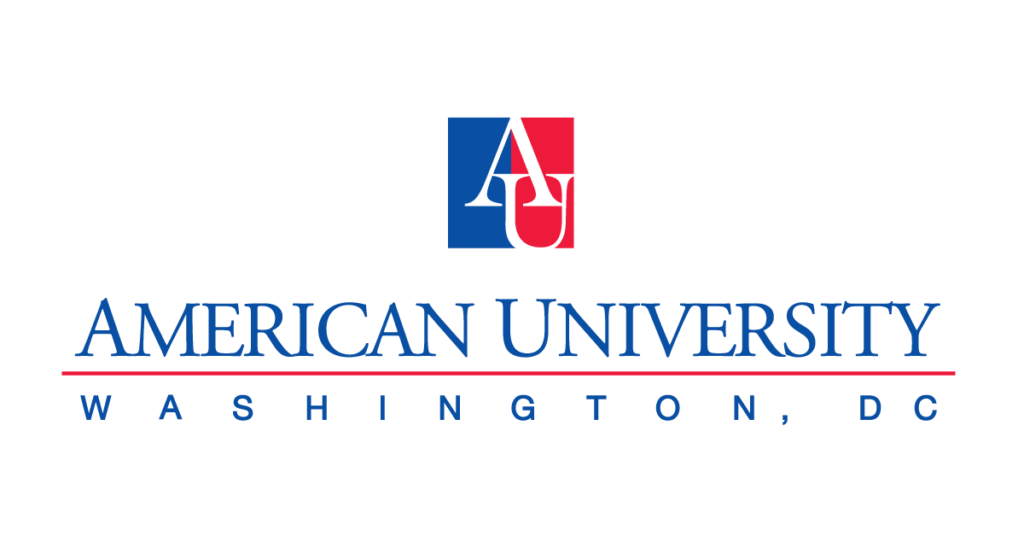
Funding for this research was provided by the Bill & Melinda Gates Foundation. The findings and conclusions contained within are those of the authors and do not necessarily reflect positions or policies of the foundation.

